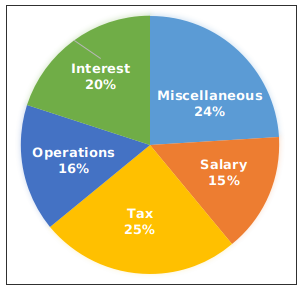1.  In a certain country, allocations to various sectors of the yearly budget per Rs.1000 crores are represented by this pie-diagram. The expenditure (in Rs.) on Agriculture is
In a certain country, allocations to various sectors of the yearly budget per Rs.1000 crores are represented by this pie-diagram. The expenditure (in Rs.) on Agriculture is
Show Similar Question And Answers
 How much is the expenditure (in Rs crores) on Operations annually?
How much is the expenditure (in Rs crores) on Operations annually? Powered By:Omega Web Solutions
Powered By:Omega Web Solutions